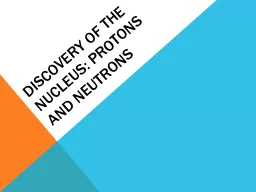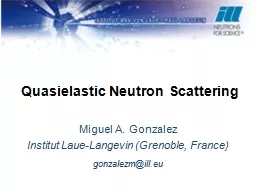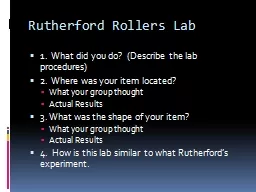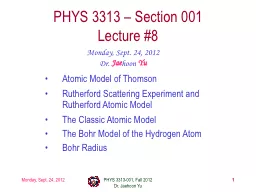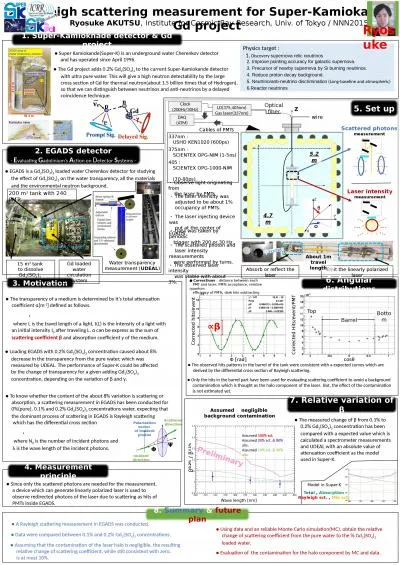PPT-RUTHERFORD SCATTERING
Author : stefany-barnette | Published Date : 2016-10-25
Edan Bainglass Jose Chavez Kennedy Izuagbe After his discovery of alpha particle emissions from a radioactive isotope of Radon gas for which he was awarded the 1898
Presentation Embed Code
Download Presentation
Download Presentation The PPT/PDF document "RUTHERFORD SCATTERING" is the property of its rightful owner. Permission is granted to download and print the materials on this website for personal, non-commercial use only, and to display it on your personal computer provided you do not modify the materials and that you retain all copyright notices contained in the materials. By downloading content from our website, you accept the terms of this agreement.
RUTHERFORD SCATTERING: Transcript
Download Rules Of Document
"RUTHERFORD SCATTERING"The content belongs to its owner. You may download and print it for personal use, without modification, and keep all copyright notices. By downloading, you agree to these terms.
Related Documents


